
This video asks us to investiage how insects have adapted.
- Subject:
- Science
- Material Type:
- Activity/Lab
- Provider:
- Reimagine Teaching
- Provider Set:
- Utah's Hogle Zoo
- Date Added:
- 11/30/2020

This video asks us to investiage how insects have adapted.
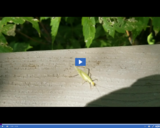
This video asks us to discover patterns in insects that live in the same area.

This video showcases how Newts are unique amphibians.

This video asks us to compare and contrast seals and sea lions.
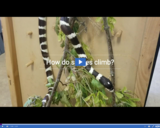
This video investigates how snakes climb.
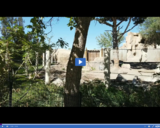
This video asks us to watch Woodpeckers closely.

See how light knocks electrons off a metal target, and recreate the experiment that spawned the field of quantum mechanics.

The Law of Conservation of Mass states that mass is conserved during physical and chemical changes. Students explore this concept by taking initial masses, making predictions, and finding final masses of physical changes. Students observe that the mass of aluminum foil in a sheet is the same as the mass of that piece of Aluminum foil formed into a small ball. Students will use a balance and begin to learn terms such as mass and grams.

Build your job skills with Google's Applied Digital Skills program!

Learn more about the planets in our solar system in this amazing graphic.

Students will be presented with data cards about plants and they will need to determine how to sort the data.

Child(ren) wil explore how sunlight can cast shadows on a sunny day. Child(ren) will trace shadows on the sidewalk to color. This can be an outline of their own body(s), or they can trace the outline of a preferred toy, etc.

Have items ready to complete and extend patterns. You can use blocks, poker chips, candy, cards created for holidays, etc. Hand the materials to your child(ren) and ask them to sort them by likeness. Ask them to create, duplicate, complete, and/or extend a pattern. For example, you can hand them a handful of colored goldfish crackers or colored cereal rings. Once they are sorted, count how many you have of each color. Ask them to select at least 2 colors to make patterns with. Allow them to create more complex patterns as they are ready.

In this instructional video, the Hogle Zoo explains how to use the lesson plan "Pollination Station."
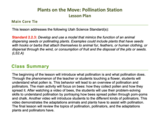
The goal of this activity is to give students a better understanding of the act of pollination and what pollination produces. It will also provide them with a sense of the adaptations that animals and plants have to help with the pollination process.
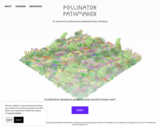
Build a digital garden with pollinators in mind, then print out the plans and build it in real life.

Build your job skills with Google's Applied Digital Skills program!
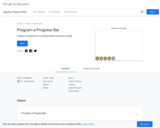
Learn how to create a progress bar for Google Slides using coding in Google.

Travel with us to Uintah River High School on the Ute Indian Tribe's Uintah and Ouray reservation to learn how science teacher Mike Sanderson uses real-world projects and Bluetooth probes to engage students in critical thinking and computational thinking. See how Mr. Sanderson collaborates with his regional educational service center to design these projects, which connect directly to the Ute Indian Tribe's tradition of stewarding the land, plants, animals and water of their 4.5 million-acre reservation.
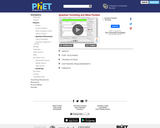
Watch quantum "particles" tunnel through barriers. Explore the properties of the wave functions that describe these particles.